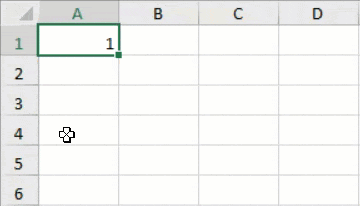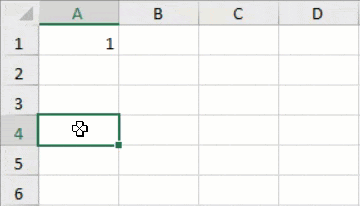-
Spread Windows Forms Product Documentation
- Getting Started
-
Developer's Guide
- Understanding the Product
- Working with the Component
- Spreadsheet Objects
- Ribbon Control
- Sheets
- Rows and Columns
- Headers
- Cells
- Cell Types
- Data Binding
- Customizing the Sheet Appearance
- Customizing Interaction in Cells
- Tables
- Understanding the Underlying Models
- Customizing Row or Column Interaction
-
Formulas in Cells
- Placing a Formula in Cells
- Displaying Formula in Cells
- Specifying a Cell Reference in a Formula
- Specifying a Sheet Reference in a Formula
- Specifying an External Reference in a Formula
- Using a Circular Reference in a Formula
- Using DataTable Formula
- Nesting Functions in a Formula
- Recalculating and Updating Formulas Automatically
- Finding a Value Using GoalSeek
- Allowing the User to Enter Formulas
- Creating and Using a Custom Name
- Creating and Using a Custom Function
- Creating and Using a Visual Function
- Creating and Using External Variable
- Using the Array Formula
- Working With Dynamic Array Formulas
- Working with the Formula Text Box
- Setting up the Formula Provider
- Setting up the Name Box
- Using Language Package
- Accessing Data from Header or Footer
- Auto Format Formulas
- Managing External Reference
- Precedents and Dependents
- Sparklines
- Keyboard Interaction
- Events from User Actions
- File Operations
- Storing Excel Summary and View
- Printing
- Chart Control
- Customizing Drawing
- Touch Support with the Component
- Spread Designer Guide
- Assembly Reference
- Import and Export Reference
- Version Comparison Reference
Allowing the User to Enter Formulas
Spread for WinForms supports the ability to type in a formula by simply starting with an equal’s sign (=). This is the default behavior in the worksheet where the displayed result depends on the cell type.
For example, an integer cell type displays the result as an integer, even if the result of the formula is not an integer. In this case, a number may appear rounded.

You can control whether to allow the users to enter formulas in a worksheet by setting the boolean value in FpSpread.AllowUserFormulas property.
fpSpread1.AllowUserFormulas = true;fpSpread1.AllowUserFormulas = TrueTo define specific formatting for currency and date cells or setting various cell types, refer to Working with Editable Cell Types.
For information on the floating formula bar, where users can type in formulas and select cells dynamically, refer to Working with the Formula Text Box.
Using Plus or Minus Sign
You can also input a formula in a worksheet by starting with a plus sign (+) or a minus sign (-). These signs function the same as the equal sign (=) and Excel users who are accustomed to using the plus or minus sign don't have to change their behavior when using Spread.
The equal sign is still automatically added before, so that formulas are converted to work as expected. For example, if you enter "+SUM(1,2)" when editing, it will be "=+SUM(1,2)" when displayed again.

When using the plus or minus sign to enter a formula, the users should be aware of the following behavior:
If the text cannot be parsed as a formula, it'll be parsed as a simple value.
If the text can be parsed as a formula, then:
If there are only numeric values ("+1"), percentage values ("+10%"), or percentage for scientific formula ("+1e-20%") then it will be parsed as a simple value along with its corresponding format.
Otherwise, the formula is set to the cell input.
!type=note
Note: This behavior only works with default cell type in flat style mode.
Using the Properties Window
At design time, in the Properties window (in the Behavior category), select the AllowUserFormulas property.
Select True from the drop-down list to allow users to enter formulas or select False to prohibit them.
Using the Spread Designer
Select the Spread component (or select Spread from the pull-down menu).
In the property list for the component (in the Behavior category), select the AllowUserFormulas property and select the value True.
From the File menu choose Apply and Exit to apply your changes to the component and exit Spread Designer.
See Also
Specifying a Cell Reference in a Formula
Specifying a Sheet Reference in a Formula
Specifying an External Reference in a Formula
Using a Circular Reference in a Formula
Nesting Functions in a Formula
Recalculating and Updating Formulas Automatically
Finding a Value Using GoalSeek
Creating and Using a Custom Name
Creating and Using a Custom Function
Creating and Using External Variable
Working with the Formula Text Box


